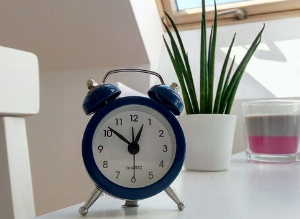A family's mental health journey: Emergency, illness, recovery, stability
Published 21 Mar 2016

In March 2010, Pam Lipp received the call she'd been dreading for months. She figured it would come from one of three places: the police, the hospital or the morgue. Instead, it was her husband, Doug, saying that he'd just received word that their 18-year-old daughter, Amanda, a freshman at Chico State University in California, was being held at a psychiatric crisis center after trying to throw herself in front of a moving car. Amanda had lost her grip on reality and fallen into a state of psychosis. She'd started selling off her belongings and believed that cameras were following her everywhere.
Doug was away at a speaking engagement, so Pam jumped in the car with a friend and raced to the crisis center two hours away. When they arrived, they found Amanda, curled up in a ball on the floor in a fetal position, sobbing. "I was hallucinating. I thought I was a doctor. When my mom got there, I realized I was the one in trouble," says Amanda. "Nothing prepares you for seeing your child in such turmoil. I felt helpless," says Pam.
Amanda was soon diagnosed with bipolar disorder, a mental illness characterized by manic highs, depressive lows and possible periods of psychosis. Although the diagnosis provided a new direction to what had been an all-consuming journey for the Lipp family, it was just one stop on the bumpy road to navigating the mental health system. The Lipps are not alone: Nearly one in five Americans experiences a mental illness in any given year, but fewer than half of them receive treatment.
Early signs
Amanda first started acting out when she was in middle school in Fair Oaks, California. She had extreme mood swings and explosive arguments with her parents. Pam and Doug, who run a small business together, hoped it was typical adolescent drama that would soon fade. "We never knew which Amanda we were going to get," Pam recalls — the edgy Amanda looking for a heated debate, or the down, depressed Amanda who would retreat to her room. Eventually, the intensity and unpredictability of her moods made them realize she needed professional help.
They took her to the family doctor, who agreed that Amanda required more help but said that she didn't have anyone to refer her to. Instead, the doctor recommended that Pam request a copy of all the therapists in her zip code who worked with her insurance company and call down the list. Pam called dozens of practitioners, leaving message after message. Not only was the list outdated, but most were too busy to even see her daughter and the ones who were highly recommended didn't accept her insurance anymore.
For her part, Amanda was reluctant about seeing a therapist. She worried about what other people might think, and that it would change the image she had of herself. "I was the popular kid who people looked up to," says Amanda. "I thought that if my friends saw me as someone to be pitied, they wouldn't lean on me anymore. Part of me wanted to get help, yet the other part of me didn't want to admit I needed it."
She agreed to give therapy a try and Pam found someone Amanda was comfortable with. Yet, at an out-of-pocket rate of $120 per hour, the Lipps just couldn't afford the amount of care she needed, which was about three sessions per week. She visited a psychiatrist and was diagnosed with depression and put on an antidepressant. Despite the treatment, Amanda continued to spiral downward — staying out late, self-medicating with drugs and arguing with her family.
During those years, Pam says, she and Doug were living one exhausting day to the next. They had three children to raise, but taking care of Amanda consumed their lives. "We felt like we were in prison in our own home with all the hostility and upheaval."
By the time Amanda headed to college, she was barely speaking to her parents.
Fighting for care
Amanda's bipolar diagnosis was a turning point — it meant that she could begin to receive the treatment she desperately needed. But it wasn't easy to find at first.
The crisis center would only hold her for a maximum of 72 hours, and Amanda needed much more treatment than that. When Pam asked where her daughter would be sent next, the doctor told her Amanda would be discharged and likely end up back in the center.
So Pam spent the next day in the crisis center waiting room, desperately calling one psychiatric hospital after another to find a place to send Amanda. They were all full. She begged them to call her back when they had an opening, but they told her they couldn't reserve a spot. Instead, they told her to call every half hour in the hope that she'd be able to grab the next available bed. Pam plugged her cellphone into the waiting room wall and repeatedly called each one on speed dial. "You go into mother-bear mode, where you dig in and do what you have to do to protect your cub. I knew I couldn't stop until Amanda had the help she needed," says Pam.
After eight hours of continuous dialing, Pam finally found Amanda an open bed at a hospital near their home. For Pam, it was a huge relief that her daughter was safe. "We felt like we were finally entering a new phase of tackling her condition. In the hospital, at least we knew where she was and that she was under a watchful eye. We felt safest knowing she didn't have a choice to leave."
But Amanda had a different perspective. She didn't see her psychosis as a disease — she saw it as a transformation where she was finally able to face her vulnerability and deal with her issues.
"In the hospital, I felt like a prisoner," she says. "I felt trapped in a space where people were always watching me and monitoring my behavior." Amanda is an artist who finds solace in creativity, but she says the staff in the hospital was more focused on trying to treat her medically and didn't seem to value what she was doing with her art. "Trying to express myself and heal felt impossible," she says.
Figuring out finances
While Amanda was in the hospital, Pam was gripped with fear over the coverage of the treatment. "I was terrified that insurance would run out and we'd lose our savings and everything we'd worked for."
Fortunately, a federal law passed in 2008 guarantees that mental illnesses be covered "at parity" with any other disease, without special limitations. Her insurer informed Pam that any care Amanda needed would be covered. "I was so relieved," says Pam.
After a month in the hospital, two months of a full-time outpatient program, the temporary help of an antipsychotic medication and years of therapy with a new psychologist, Amanda made an impressive recovery, learning to manage her condition.
A key point for her was a change in perspective. She went from seeing her symptoms as evidence of illness to seeing them as strengths that she could use to her benefit. For example, she could turn a period of introspection that she might have previously seen as "depression" into a piece of art.
Living out loud
Many families end up running into similar obstacles — they don't know where to go for proper care or they're worried about the cost. But there's also the stigma of mental illness that prevents people from reaching out because they fear judgment or worry that it might affect their jobs.
"When you break a leg, you get a cast and people sign it and put smiley faces on it. When you're given a mental illness diagnosis, you're cast out," says Amanda, who is now a 24-year-old college graduate and member of the board of California's National Alliance on Mental Illness, an advocacy group.
It truly took a village and a community of friends to help Amanda heal.
Fortunately, Pam wasn't afraid of the stigma, having learned from her own family's mistakes. "I grew up in an environment where everything was pushed under the rug," she says. "People were suffering from mental illness, but they blamed it on other things like migraines. In reality, they needed therapy. I wasn't going to let that happen with Amanda."
Pam faced the stigma head-on and was completely open with her friends about what was happening. While this didn't help the Lipps crack the code on their daughter's illness earlier, it gave them strength when they needed it.
"Mental illness is not usually a casserole disease — when you tell your friends that a family member is suffering from a mental illness, they don't deliver a lasagna. But in our case, our friends did because we were open about it," says Pam.
People rallied around her. In particular, Pam was already part of a monthly mothers' group that got together to make care packages for their children in college. The other women urged her to keep coming to the group and making care packages for Amanda throughout her illness. "They were my rock of friendship. It truly took a village and a community of friends to help Amanda heal," says Pam.
Finding hope
Hard-won strides in the area of mental illness like the parity law helped Pam and her family get through the crisis intact, but it was a difficult road.
"We're so proud of Amanda and everything she's overcome," says Pam. That doesn't mean she's stopped worrying. "We experienced a mental health emergency, an illness and a recovery, and now we're stable. But every day I wake up and worry, could she relapse?" For anyone with a history of psychosis, another breakdown is always a possibility.
Now armed with knowledge and experience, Pam feels more confident. And in the meantime, both mother and daughter are dedicated to raising awareness and helping other families find the hope and the care they need in a system that often seems to be working against them.
For women facing similar situations, Pam has this advice: "Treat mental health concerns like you would any condition. Don't let the stigma be a roadblock to getting yourself and your family the care that's needed. If your gut tells you there's something going on with your child, look the issue in the face and get the help you need."
CNN Health
5 comments


You will also like
Read the article

 Facebook
Facebook Twitter
Twitter





